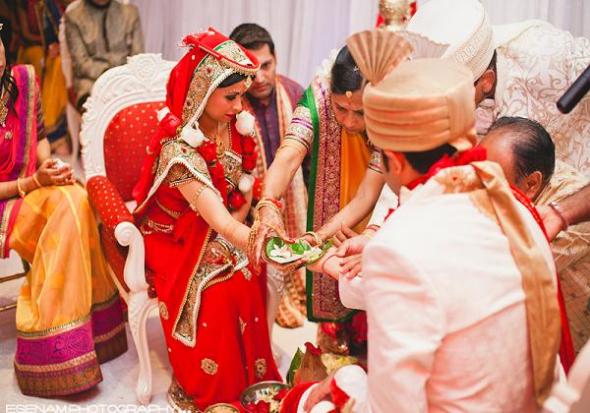Story Behind Wedding Traditions
by dianazuhlsdorf
A wedding is the ceremony or ritual where two people is unites in marriage. Every ritual varies depending on the family or regional culture. Most of weddings include proclamation of marriage from a public figure, wedding vows and presentation of gifts. Some cultures give a lot of importance to the pre-wedding and wedding ritual, depending on their beliefs.
Family significance in Venezuelan Cultures.
Most of the times, the proposal is made 4-7 months before the wedding. The groom always needs to ask the brides mother and father before proposing to. Its really important to always wear your engagement ring all the time to show true love between the couple.
In Venezuela, if the groom looks at his fiancée dress before the wedding, is a signal of bad luck on the marriage. The dress needs to be approved by the bride’s family.
Two weeks before the church ceremony, the couple has to get a civil marriage, and usually make a party with family and closest friends afterwards, celebrating the legal marriage expecting the religious ceremony.
The Indian tradition gives a lot of importance to marrige. Their ceremonies are very colorful and sometimes the reception can last for a few days. Each ritual has a story or a deep meaning to it. Indian wedding traditions can be broadly classified in pre-wedding rituals, the wedding ceremony and the post wedding rituals.
Pitthi and Mehendi are traditional Indian Rituals, which are very important pre-wedding rituals. One is well-known as Pitthi, which is a paste made of Turmeric – a bright yellow aromatic powder native from south-Asia used for flavoring and coloring in Asian cooking – , Chickpea flour – which is a pulse flour made from ground chickpea – , and rose water. Family members apply the paste on the grooms skin, while wishing for good luck to the marriage.
Mehndi is a ritual where the bride and the bridesmaids go to a party where the bride is painted with dirt on the skin with different patterns. These patterns represent good luck and whises for the marriage. These ceremonies are very important to indian culture to get married.
The dress for the bride in Indian Culture is one of the most elaborated, detailed and expensive dresses in the world. It is elaborated with a handmade jewelry pattern and always have to be red or redwine. They give a really big significance to using visual arts and religious devotion on their pre-wedding rituals, by representing their religious beliefs through the patterns on both rituals and the dress.
The Shagun ceremony holds an important place in the pre-wedding rituals. Once the couple have consented to the marriage, the elders in the families chose an auspicious date for the shagun ceremony. This date may be calculated with help of astral calendar known as Panchanga. On the day of the Shagun, groom’s mother visits the bride’s house with gifts, clothes, betel nut, rice and incense. Jewelry and sweets are also added to the Shagun. Acceptance of the shagun by the bride signifies her formal consent to be the daughter in law of the family.
Kanyaa daan refers to giving away the daughter in marriage. During the Kanyaa daan ceremony, father gives the bride’s left hand in the groom’s right hand for the marriage. The groom promises the bride’s father that he shall protect her and be with her in good times and bad times.
Sangeet ceremony is in the house of the bride and the groom separately. It consists of music, dancing and have fun. Bride’s friends revel in teasing the bride about her future husband. Elders of the house sing traditional songs and they bless the bride. Sangeet ceremony also involves pampering the bride as she is nearing the last stage of her single life. Some communities may have different ceremonies within the Sangeet ceremony itself.

[…] Story Behind Wedding Traditions (zuhlsdorfde.wordpress.com) […]
You chose an exciting ritual to share and you did an excellent job detailing the various elements and symbols of the ritual. You convey the significance of every aspect of the ritual making it seem very appealing to someone who might be interested in planning a wedding. Through your explanation, the richness of this ritual is evident.
You should consider relocating your photo to the top of the article and adding a caption.
You did not include a bibliography.